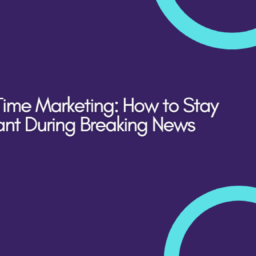In 2025, marketing is less about guesswork and more about algorithms. The sheer volume of data, the complexity of consumer journeys, and the relentless demand for personalization make it impossible to achieve significant, scalable growth without the power of Artificial Intelligence. For forward-thinking businesses, the question isn’t if they should use AI, but how to weave a coherent, robust AI Marketing Stack that acts as the engine for exponential expansion.
This isn’t about collecting a disparate set of shiny AI tools; it’s about strategically integrating them to create a seamless, intelligent ecosystem that drives efficiency, hyper-personalization, and ultimately, unparalleled growth.
Why an AI Marketing Stack is Essential for Scalable Growth
Traditional marketing models hit a ceiling. Manual optimization, generic content, and reactive strategies simply can’t keep pace with today’s market demands. An integrated AI marketing stack offers:
- Unprecedented Efficiency: Automate repetitive tasks, allowing your team to focus on strategy and creativity.
- Hyper-Personalization at Scale: Deliver tailored experiences to millions of customers simultaneously, something impossible manually.
- Superior ROI: AI optimizes campaigns in real-time, identifying the most effective spend and reducing wasted budget.
- Data-Driven Decision Making: Move beyond intuition to actionable insights derived from vast datasets.
- Adaptive Strategies: AI constantly learns and adapts to market shifts, consumer behavior, and campaign performance.
The Core Components of Your Ultimate AI Marketing Stack
Building your stack involves strategically selecting tools that communicate and collaborate, forming a powerful neural network for your marketing efforts.
- AI-Powered Data & Analytics Hub:
- Purpose: To collect, process, and derive actionable insights from massive datasets (customer behavior, market trends, campaign performance).
- Tools: Platforms like Google Analytics 4 (with its AI-driven insights), specialized predictive analytics tools, and AI-powered customer data platforms (CDPs) that unify customer profiles and predict future behaviors (e.g., churn risk, next best offer).
- Impact: Moves you from reactive reporting to proactive, predictive strategy.
- Intelligent Content Creation & Optimization:
- Purpose: To generate, optimize, and personalize content across all formats and channels.
- Tools:
- AI Writers (e.g., Jasper, Copy.ai): For generating ad copy variations, blog outlines, social media posts, email subject lines, and even first drafts of longer content.
- Generative AI for Visuals (e.g., Midjourney, DALL-E, Adobe Firefly): For creating unique images, adapting product shots to various contexts, generating diverse ad creatives, and even small video snippets.
- SEO AI Tools (e.g., Surfer SEO, MarketMuse): For content gap analysis, keyword clustering, and optimizing content for search engine visibility based on AI recommendations.
- Impact: Rapid content production, consistent brand voice, and content optimized for audience resonance.
- Automated Customer Engagement & Personalization:
- Purpose: To deliver personalized experiences and interactions throughout the customer journey.
- Tools:
- AI Chatbots & Conversational AI (e.g., Intercom, HubSpot Chatbot): For 24/7 customer support, lead qualification, and guiding users through sales funnels.
- Recommendation Engines: For e-commerce product recommendations, content suggestions, and personalized email offers.
- Dynamic Content Platforms: For serving different website elements or email content based on user profiles or real-time behavior.
- Impact: Improved customer satisfaction, higher conversion rates, and efficient lead nurturing.
- Optimized Advertising & Media Buying:
- Purpose: To maximize ad spend efficiency, target with precision, and optimize campaigns in real-time.
- Tools:
- Platform AI (e.g., Google Ads’ Smart Bidding, Meta’s Advantage+ campaigns): Leveraging the native AI of ad platforms for automated bidding, audience expansion, and dynamic creative optimization.
- Third-Party Ad Optimization Tools: AI-powered tools that provide cross-platform insights, budget allocation recommendations, and predictive analysis for campaign performance.
- Impact: Lower Cost Per Acquisition (CPA), higher Return On Ad Spend (ROAS), and scalable reach to qualified audiences.
- Smart CRM & Marketing Automation Integration:
- Purpose: To manage customer relationships, automate workflows, and provide a unified view of the customer.
- Tools: AI-enhanced CRMs (e.g., Salesforce, HubSpot) with features like AI-powered lead scoring, predictive lead routing, and intelligent workflow automation that trigger actions based on customer behavior.
- Impact: Streamlined sales and marketing alignment, efficient lead qualification, and nurturing processes.
How to Build Your AI Marketing Stack (Practical Steps)
- Audit Your Current Stack & Needs: What tools do you already use? Where are your biggest bottlenecks? Where can AI provide the most immediate value?
- Prioritize Data Quality: AI is only as good as the data it’s trained on. Ensure your data collection is clean, consistent, and comprehensive.
- Start Small, Integrate Incrementally: You don’t need to overhaul everything at once. Choose one or two key areas (e.g., ad creative generation or email subject lines) to integrate AI, then expand.
- Focus on Interoperability: Look for tools that have robust APIs or native integrations with your existing CRM, analytics, and automation platforms.
- Foster Human-AI Collaboration: The “ultimate” stack isn’t about replacing humans. It’s about augmenting human marketers, freeing them from mundane tasks so they can focus on strategy, creativity, and relationship-building.
- Stay Agile & Educated: The AI landscape is evolving rapidly. Continuously research new tools, test new capabilities, and educate your team on the latest advancements.
Building an AI marketing stack for scalable growth is an ongoing journey, not a destination. By strategically weaving intelligent tools into the fabric of your marketing operations, you’re not just preparing for the future; you’re actively shaping a more efficient, personalized, and impactful present for your brand.



